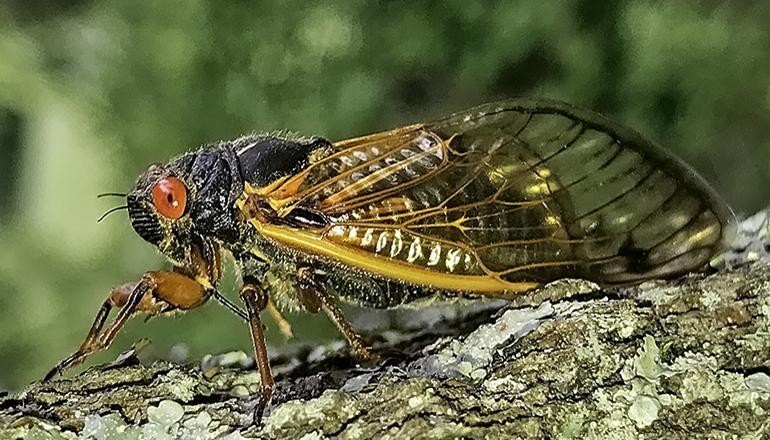Billions of cicadas are set to create a buzz this spring, with two broods emerging at the same time. These broods, last seen together in 1803, won’t appear together again for another 221 years.
According to Tamra Reall, a University of Missouri Extension specialist, this phenomenon means that only our distant descendants will witness the next dual emergence. Reall, a horticulturist and entomologist in the Kansas City area, eagerly anticipates the event. Known as “Dr. Bug,” she finds the prospect exciting.
Periodical cicadas, belonging to the genus Magicicada, are known for having the longest life cycle of any insect. These broods, designated by Roman numerals, emerge synchronously. Brood XIII, with a 17-year cycle, and Brood XIX, with a 13-year cycle, are set to emerge together for the first time since the early 19th century.
The last joint emergence of these broods occurred during Thomas Jefferson’s presidency, predating Missouri’s statehood. The next such event is projected for 2245.
In 18 Midwestern states, cicada emergence is expected. Missourians will primarily witness Brood XIX, also known as the Great Southern Brood, which last appeared in the state in 2011. Their emergence is anticipated from late April to early May.
Northeastern Missouri residents near the Illinois border might experience both broods.
Cicada nymphs, after spending 13 or 17 years underground, emerge when soil temperatures reach 64 degrees Fahrenheit. They follow a “safety in numbers” strategy, emerging en masse. After ascending trees or other vertical structures and shedding their exoskeletons, they proceed to mate. The entire lifecycle from emergence to death spans four to six weeks.
High cicada numbers, potentially 1.5 million per acre, are expected after spring rains. This abundance will attract numerous predators and may result in significant litter.
Brood XIX, consisting of four species, will also appear in several other states, including Alabama, Arkansas, and Georgia, from late April through mid-May.
Brood XIII, the Northern Illinois Brood with three species, is expected in Iowa, Illinois, Indiana, Wisconsin, and possibly Michigan in 2024. Stragglers may extend to southern Illinois and St. Louis. This brood will emerge from mid-May through June.
The loud sounds heard during cicada emergence are male mating calls, which can be as loud as lawnmowers. Each species has a unique call, and when synchronized, the sound can exceed that of a jet engine.
With five eyes, cicadas are vigilant in seeking mates. Their brief adult life, lasting only four to six weeks, is dedicated to reproduction. After mating, the males soon die.
Female cicadas lay their eggs in tree branches, after which they also die. The nymphs fall to the ground, burrow into the soil, and begin the cycle anew.
Cicadas are attracted to the vibrations of power tools and lawnmowers. While they are loud and messy, they pose no harm to humans or pets. Reall advises against using pesticides, which could harm birds and beneficial insects. She suggests protecting new trees and bushes with cheesecloth.
Missourians are encouraged to participate in mapping the Cicada emergence using the Cicada Safari app, available on the Cicada Safari website. This initiative is led by entomologist Gene Kritsky.
For further information, Reall recommends visiting the following resources:
(Photo courtesy of Gene Kritsky)


